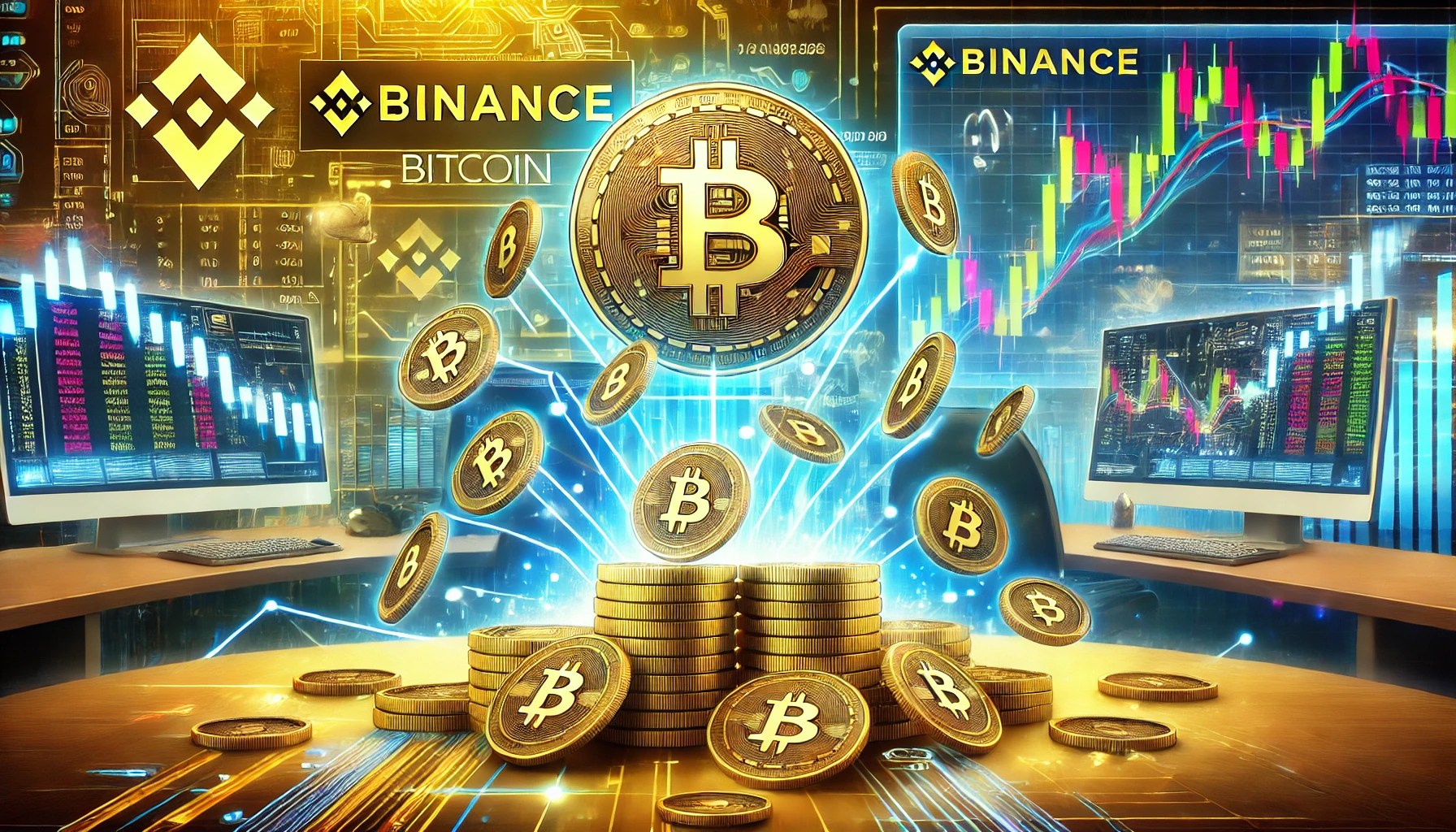This year has been a tumultuous one for Bitcoin. It has spiked, stagnated and seen large outflows. But what does its future hold?

Bitcoin has had a tumultuous year, seeing large outflows, and moments of stagnation. But what does the future hold for the cryptocurrency? In this article, we discuss the possible scenario for Bitcoin over the next three years.
This year's volatility has been unprecedented. Despite seeing its ups and downs, you, the investor, must have been tearing your hair out watching the price of Bitcoin change this year. ETFs and a halving event have upturned the apple cart. But will it pick up and where can the coin go next? In this article, we discuss the future of Bitcoin in the next three years.
The Current Situation With Bitcoin
At the time of writing, the price of BTC/USD sums up the sentiment that has been prevalent for most of the year. This is one of volatility. Amidst the possibility of a recession, this week it managed to bounce back to $58,000. This was due to a consumer report that showed the lowest rate of inflation since 2021. It cooled to 2.5% in August, lower than the expected 2.6%. This is a much-needed boost for Bitcoin in September, which has historically been a dull month for the currency.
Bitcoin Halving
One event that could influence the future is the halving event. The Bitcoin halving occurs every four years. During this, the reward for producing Bitcoin is halved. This means fewer of them are produced.
Bitcoin miners solve extremely complicated mathematical problems. These equations verify transactions within the currency. When they do this job, they receive a set amount of Bitcoin. Originally, this started at 50 Bitcoins for every data block they confirmed. When a Bitcoin halving occurs, this is cut in half to lower production and protect against inflationary measures. This year was one in which a Bitcoin halving occurred. Miners now get 3.125 Bitcoin for every calculation they complete.
However, it is not just the value of production that goes down. As each year passes, the difficulty of solving the puzzles rises. That means more work for less outcome, seriously lowering output.
All of this is offset by the rising value of Bitcoin. Less is being produced, but that also makes it more valuable. Thus, these three factors of lower rewards, and tougher production methods but rising value normally signal a spike in Bitcoin at the three and six-month mark after a halving event. That was until this year.
So far, the spikes that have occurred after previous Bitcoin halving events have yet to materialise. They usually bring a much-needed boost to the currency, both before the halving as investors speculate, and its subsequent rise. Looking to the future, in three years' time, the approaching Bitcoin halving will undoubtedly have less consumer sentiment than other previous ones if it has broken the pattern and not spiked.
Consumer Sentiment
Another key factor, often overlooked when talking about cryptocurrency and Bitcoin, is consumer sentiment. If Bitcoin is going to stay, part of its value must be in everyday use and business transactions.
Luckily, 65% of consumers believe crypto could replace cash in the future. This is according to a survey conducted by Deutsche Bank. It surveyed over 3600 people in the US, UK and Europe.
The same survey also had a mixed outcome for the future of BTC to USD. Only 12% to 14% of them expected it to surpass the $70,000 mark by the end of the year. A third believed it would remain below $60,000.
However, the data did show one large flaw. Over half of the people surveyed also believed it was an important asset class and a viable payment method. This suggests that a significant number of the people involved were those already involved in investments, possibly ones related to cryptocurrency. It may not have contained a wide enough breadth of the population.
Bitcoin ETFs
Another factor that will determine the future of Bitcoin is the residual impact of the introduction of Bitcoin ETFs in January. Exchange-traded funds allow people to buy into a basket of commodities, in this case Bitcoin. The ETF purchases this for them, so the investor is buying shares in the ETF without holding the actual coin. This makes it much more stable and is a way to attract traditional finance investors to Bitcoin.
Bitcoin ETFs have fared fairly well, until August when they suffered a large outpouring. This shook the faith in both the ETFs and the currency, and how they fare over the next few years could have a huge impact on the future of Bitcoin.
In defence of Bitcoin ETFs, they have been intrinsically linked to exchange rates. With these turning around, it may also buy the fortunes of the coin and even see it adopted in more Tradfi settings.
Undoubtedly, Bitcoin will be here to stay over the next few years. Its value will be determined by several factors,
The above is the detailed content of What Does the Future Hold for Bitcoin?. For more information, please follow other related articles on the PHP Chinese website!
 Senators Lummis and Scott Promise Pro-Bitcoin Legislation if Republicans Win the Majority in the Upcoming ElectionsJul 27, 2024 pm 12:58 PM
Senators Lummis and Scott Promise Pro-Bitcoin Legislation if Republicans Win the Majority in the Upcoming ElectionsJul 27, 2024 pm 12:58 PMSenator Cynthia Lummis took the stage to speak at the Bitcoin 2024 conference along with Senator Tim Scott, on Friday, discussing cryptocurrency and their vision for its role in the U.S. financial system.
 Bitcoin (BTC) Exchange Netflow Has Just Taken to Positive Values, Here's What It MeansJul 27, 2024 am 12:07 AM
Bitcoin (BTC) Exchange Netflow Has Just Taken to Positive Values, Here's What It MeansJul 27, 2024 am 12:07 AMOn-chain data shows the Binance exchange has received large net Bitcoin inflows during the past day, indicating that BTC's decline may extend further.
 Bitcoin (BTC) – America’s Key To Economic Supremacy?Jul 26, 2024 pm 09:15 PM
Bitcoin (BTC) – America’s Key To Economic Supremacy?Jul 26, 2024 pm 09:15 PMIn the ongoing global economic and geopolitical rivalry, the United States may have a powerful new weapon – Bitcoin (BTC). That is the argument made by Sam Lyman
 Hackers recover $3 million in bitcoin from software wallet locked for over a decadeJun 14, 2024 am 09:57 AM
Hackers recover $3 million in bitcoin from software wallet locked for over a decadeJun 14, 2024 am 09:57 AMJoeGrand-anethicalhackerandYouTuberwhoiswidelyknownforhisprojectsinvolvingcryptowallets,hassuccessfullyrecoveredalife-changingamountofbitcoin,presentlyvaluednorthof$3millionfromasoftwarewalletthathasbeenlockedformo
 US Stock Market Peak Warning May Also Impact Bitcoin (BTC) MarketJul 27, 2024 am 06:35 AM
US Stock Market Peak Warning May Also Impact Bitcoin (BTC) MarketJul 27, 2024 am 06:35 AMFinancial experts are warning of an impending peak in US stocks. This may also lead Bitcoin to rise. According to Arthur Budaghyan, an analyst at BCA Research, the US stock market
 Bitcoin vs. Gold vs. S&P 500: Which Is the Best Investment in the Current Market?Jul 27, 2024 am 07:11 AM
Bitcoin vs. Gold vs. S&P 500: Which Is the Best Investment in the Current Market?Jul 27, 2024 am 07:11 AMCryptocurrencies, commodities, and stocks are among the most popular risk assets for investment and trade, also leading finance indicators.
 Bitcoin Holders Can Now Purchase European Union Citizenship, Combining Cryptocurrency and Immigration PolicyJul 25, 2024 pm 02:53 PM
Bitcoin Holders Can Now Purchase European Union Citizenship, Combining Cryptocurrency and Immigration PolicyJul 25, 2024 pm 02:53 PMPowered by the Unbound Fund, this initiative uses Bitcoin as a key to open up Portuguese citizenship via the country's golden visa program.
 Bitcoin (BTC) Witnesses “Rare” Buy Signal, Could Enjoy a Massive Rally to $130,000Jul 26, 2024 am 11:26 AM
Bitcoin (BTC) Witnesses “Rare” Buy Signal, Could Enjoy a Massive Rally to $130,000Jul 26, 2024 am 11:26 AMCrypto analyst Mikybull Crypto has revealed the return of a technical indicator that represents a buy signal for Bitcoin. Based on his predictions, the

Hot AI Tools

Undresser.AI Undress
AI-powered app for creating realistic nude photos

AI Clothes Remover
Online AI tool for removing clothes from photos.

Undress AI Tool
Undress images for free

Clothoff.io
AI clothes remover

AI Hentai Generator
Generate AI Hentai for free.

Hot Article

Hot Tools

SublimeText3 Linux new version
SublimeText3 Linux latest version

WebStorm Mac version
Useful JavaScript development tools

Dreamweaver CS6
Visual web development tools

SAP NetWeaver Server Adapter for Eclipse
Integrate Eclipse with SAP NetWeaver application server.

SublimeText3 Chinese version
Chinese version, very easy to use






